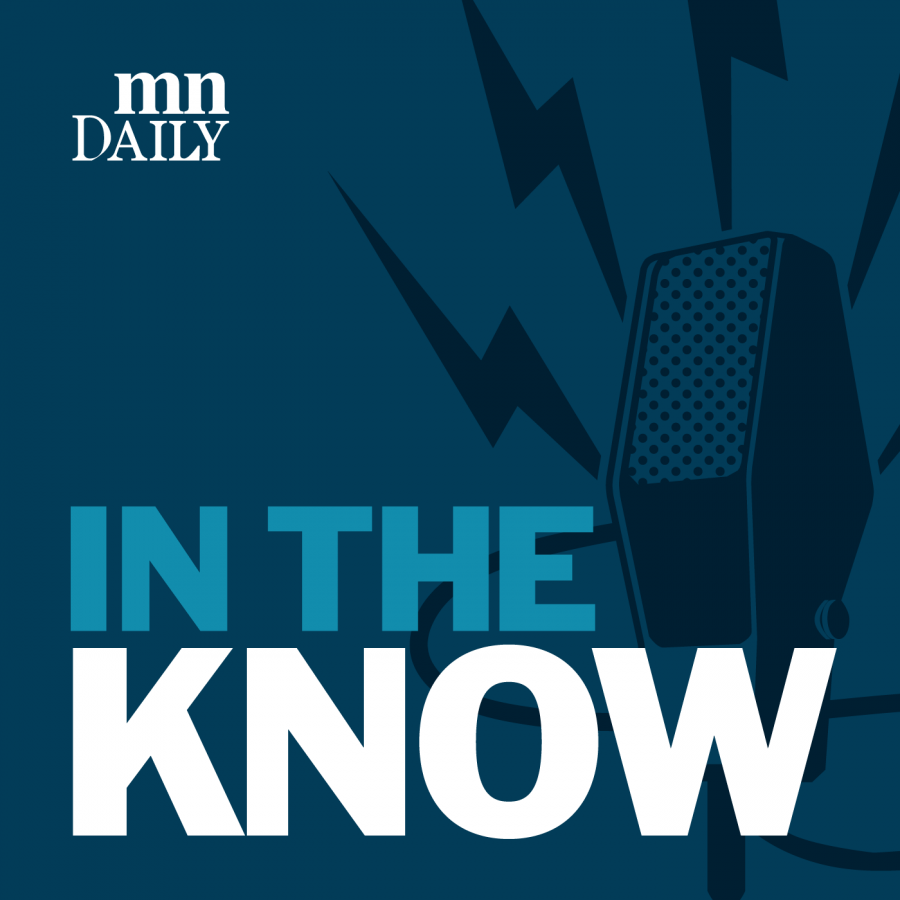STELLA MEHLHOFF: Hey all! Welcome back to In the Know. This podcast is dedicated to all things University of Minnesota. Today, we’re diving into something I’m especially excited to talk about — the convergence of art and science, right here at our very own Bell Museum.
The Bell Museum is a natural history museum located on the St. Paul campus. The Bell has a lot of the things you might expect to find — dioramas of Minnesota wildlife and a planetarium for exploring the cosmos — but they are also home to a whole lot of art.
This takes a lot of different forms: prints, sculptures, film clips and an artist residency program. As of 2023, the Bell Museum has four artists, all working in different mediums and on different subjects. Each artist uses the Bell Museum as inspiration for their artistic projects. According to the Bell’s website, the artist residency program “invites dynamic candidates from all disciplines to investigate artistic practice as a lens for scientific discovery.”
Usually artists work at the Bell for three to four months, but that can vary depending on the project. To learn more, I spoke with one of this year’s artists in residence, Felicia Cooper. She tells me of her art.
COOPER: I tend to make puppet shows for children, with a very loose definition of both puppets and children.
MEHLHOFF: For her residency at the Bell, Cooper chose to base this puppet show on Minnesota’s native mussels.
COOPER: Yeah, people thought I would change my mind I think — there may be sexier things to make puppet shows about, certainly the mammals. But I still can’t get over it, what mussels do for our environment.
MEHLHOFF: According to the Minnesota Department of natural resources mussels do play an important role in aquatic environments because they are like “ecosystem engineers, making their habitat more suitable for themselves and other organisms.” I understand that as mussels work like filters in the water. But Cooper’s puppets could explain it better than me. As part of their residency, the artists are encouraged to interact with the Bell’s collections and are shown exhibits by the staff.
COOPER: They give you a tour of the drawers and the shelves and all of these beautiful things. And I’m always really struck by the sense of like, anything is possible when I open this drawer.
It could be a passenger pigeon. It could be, uh, the most disgusting looking fish you’ve ever seen in a jar.
MEHLHOFF: But it was the Bell’s mussels that Cooper was most invested in.
COOPER: And you’re going through all of these boxes and it’s kind of just this like exercise in subtlety of different shades of gray and brown and sometimes yellow, and then one of them, out of nowhere, was like this bright fuchsia. And I was like, what? How is this bright fuchsia? And I was like asking everyone around. I was like, ‘look at this.’ Can you imagine? Like, why is this the way that it is, did someone dye this? What happened? And they were like “oh, probably someone polished it. It’s pink, very cool.”
All of the art that I make is based on asking questions together and having an opportunity to share space for those questions. I think it’s really important, especially in an age of information where I can Google pretty much anything that I want to, that we hold that time together to be curious.
MEHLHOFF: But Google can only get Cooper so far. For her, the internet doesn’t carry the same “magic” that a physical museum does.
COOPER: Am I allowed to say I’m a *censored* for museums? I think they’re amazing. They’re tremendous places. Um, as a cultural institution, I think museums offer us the opportunity to learn without expectation, you know, like, I can go into a museum and wander around for an hour. I can spend a whole day at a museum. I can spend all day in my head. I can go in with a specific question. I think they are places that are educational without a clear outcome.
MEHLHOFF: She says of the Bell Museum in particular.
COOPER: It is a place that is curated and crafted with a very clear voice of wonder, it’s not a boring quiet, and it’s not like the kind of quiet that feels, um, limited or inhibiting. It’s the kind of silence that feels, uh, thoughtful and reverent. Also though, when I was a kid, I grew up in a really small town in Pennsylvania of like 1,300 people. So going to a museum was maybe once a year, if that? My field trips were to coal mines. I would just be thrilled to read a plaque on the side of the road. Now that I can go to a museum whenever I want, I’m having the best time!
MEHLHOFF: With Cooper’s words on my mind, I visit the Bell Museum on Feb. 4. It’s busy the day I go, and rarely quiet, but the sense of wonder she mentioned is all around me. I spend several hours wandering the exhibits and never feel bored.
I love the way that every room I enter has a combination of natural and human elements. There is this 7-foot tall moose right next to prints by nature artist Francis Lee Jaques. There are taxidermied shorebirds in front of a painting of a beach, like the one they might have walked on if alive. Even the sounds mingle, recorded bird song mixing with children’s voices. I stop at a display of mussels and, after hearing about Cooper’s enthusiasm, find that I feel a kind of affection towards them.
After my visit, I spoke with the Bell’s Emily Dzieweczynski, a communications associate, to learn more about the benefits of the art/science relationship.
DZIEWECZYNSKI: I think it’s just more modes of understanding. Different learning styles, people respond to different things. Um, so I think being able to offer an artistic perspective is really helpful in terms of like entry points into science, because science can be really daunting.
MEHLHOFF: Jenny Stampe, associate director of public engagement and science learning, adds on.
STAMPE: That idea that, you know, you’re an art person or a science person I think has been detrimental to a lot of folks, and understanding the really close interrelation between art and science and the ways they can inform one another is just a much richer way to understand things.
EMILY: I really do think that it, you need collaborations like that to consider new ways of thinking, and it happens back-and-forth. Like just as much as artists inspire scientists, scientists inspire artists. Like I think either discipline, there’s a risk of getting stuck in a rut. Um, so imagination comes from both, both places.
MEHLHOFF: While walking through the Bell Museum’s exhibits, I found a quote from American astronomer Maria Mitchell. She says, “I think we especially need imagination in science. It is not all mathematics, nor all logic, but also it is somewhat beauty and poetry.”
COOPER: When I want to tell people about whales or mussels, murmurations of birds, what I really want them to think about is like wonder and hope and um, the feeling that you get when you’ve been walking in the woods for like an hour or two. Um, and to share that these things exist, right? The woods exist even when we’re not walking in them; the mussels are cleaning the water even when we’re not thinking about them.
MEHLHOFF: You can visit the Bell Museum for free using your student ID Wednesday through Sunday from 10 a.m. to 4 p.m. For more information on the upcoming resident artists visit the Bell Museum’s website, linked in this episode’s transcript. According to Stampe, Cooper will be performing her puppet show on mussels on April 8. Cooper also has a residency this summer at Lake Pepin, working further with mussels and native biodiversities.
This episode was written by me, Stella Mehlhoff, and produced by Alberto Gomez, Hana Ikramuddin and Abby Matchtig. As always, we really appreciate you listening in! As we experiment with style and format, your feedback is super useful to us. Feel free to email us at [email protected] with comments or questions. I’m Stella Mehlhoff and this is In the Know.












